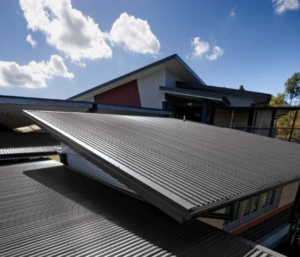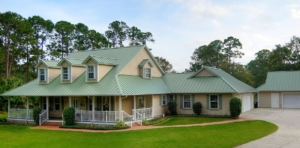 Now that more and more homeowners are opting for a metal roof instead of shingles, questions about safety often come up. And the word “lightning” is usually included in the conversation.
Now that more and more homeowners are opting for a metal roof instead of shingles, questions about safety often come up. And the word “lightning” is usually included in the conversation.
Metal roofs are no more susceptible to lightning than any other type of roofing material. In fact, it’s unusual for lightning to strike buildings at all, because it typically ends up striking the highest object in any area – no matter what material it’s made of. This is why you often hear about power lines and trees being struck. But if your roof is at the highest point in your area, you can easily install lightning rods.
And let’s say your metal roof was struck by lightning. The energy would be very likely be dispersed safely throughout the structure, leaving you at low risk for damage.
 According to the Metal Construction Association (MCA), “metal roofing does not in any way increase the risk” of your building being hit by lightning. The probability of a lightning strike is instead determined by the following factors:
According to the Metal Construction Association (MCA), “metal roofing does not in any way increase the risk” of your building being hit by lightning. The probability of a lightning strike is instead determined by the following factors:
- Topography: If your home or building is on a hilltop, it’s more likely to be hit.
- Size and height: A tall, wide building is more likely to be struck than a short, small structure.
- Frequency of thunderstorm activity: Obviously, chances are increased in an area that experiences severe weather.
“Because metal roofing is both an electrical conductor and a noncombustible material,” says the MCA, “the risks associated with its use and behavior during a lightning event make it the most desirable construction available.”
To read more about what the MCA has to say about lightning and metal roofs, click here.


